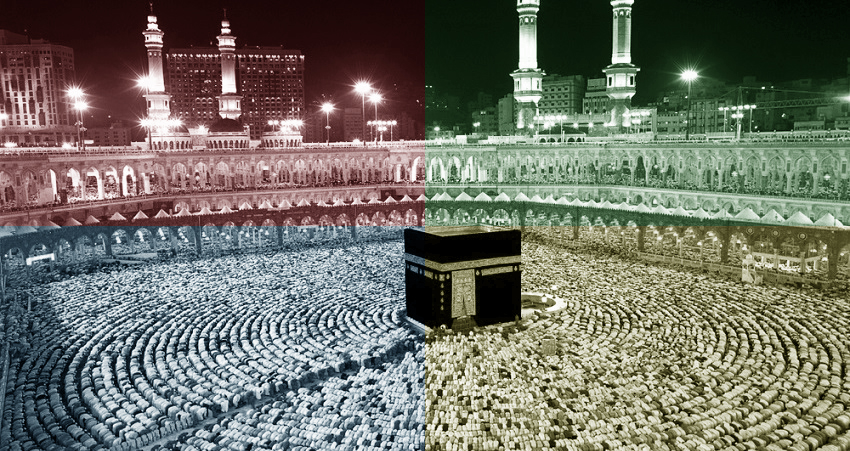Mosques is a special place in the hearts of millions of Muslims around the world. As symbols of faith, community, and architectural grandeur, they stand as testaments to the devotion and creativity of humanity. In this listicle, we will explore the top 10 biggest mosques in the world, each with its own unique history, architectural features, and cultural significance. Let us dive on this journey of discovery and appreciation.
Table of Contents
1. Masjid al-Haram
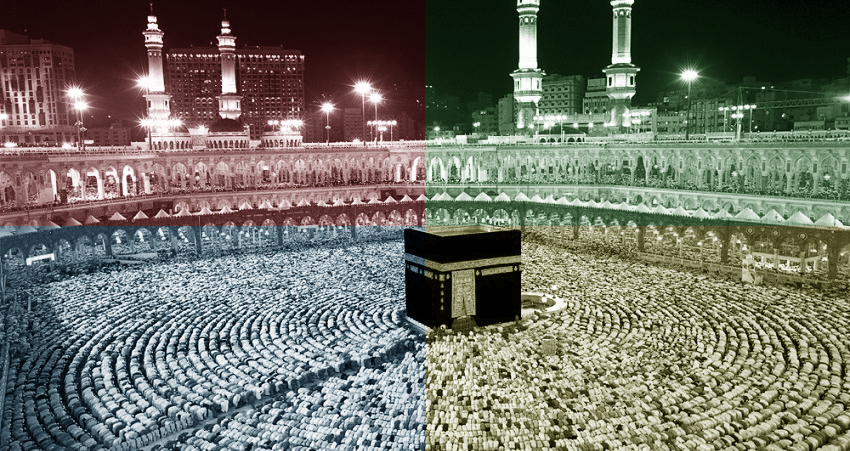
- History: Dating back to the time of Prophet Ibrahim, Masjid al-Haram in Mecca, Saudi Arabia, holds a profound historical significance.
- Capacity: With a staggering capacity of over 4 million worshippers, it is the largest mosque in the world.
- Unique Architectural Features: The elegant Kaaba, the Black Stone, and the grand expansion projects are among the notable architectural features.
- Location: Mecca, Saudi Arabia.
- Cultural Significance: Masjid al-Haram is the holiest site in Islam, drawing millions of pilgrims during Hajj and Umrah.
2. Al-Masjid an-Nabawi
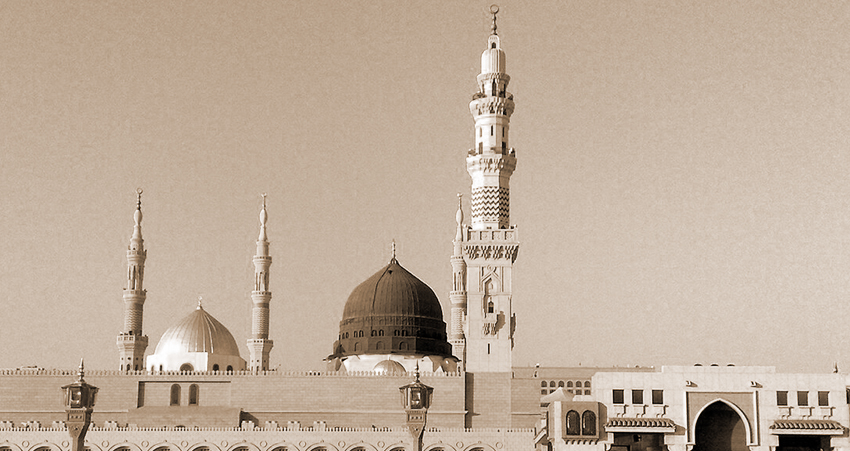
- History: Built during the time of Prophet Muhammad, Al-Masjid an-Nabawi in Medina, Saudi Arabia, holds immense historical and spiritual importance.
- Capacity: It can accommodate approximately 1 million worshippers.
- Unique Architectural Features: The Green Dome, Rawdah, and the beautiful calligraphy are some of the architectural highlights.
- Location: Medina, Saudi Arabia.
- Cultural Significance: Al-Masjid an-Nabawi is the second holiest mosque in Islam and is the final resting place of the Prophet Muhammad.
3. Istiqlal Mosque
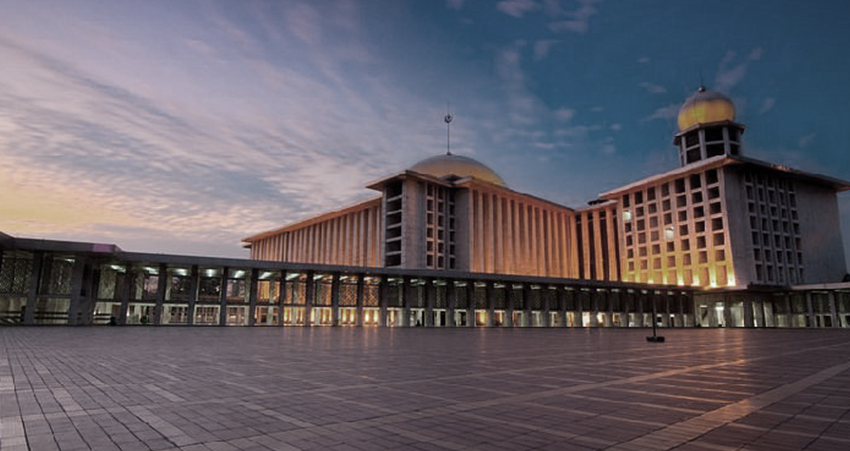
- History: Istiqlal Mosque in Jakarta, Indonesia, was built to commemorate Indonesia’s independence.
- Capacity: It can accommodate around 200,000 worshippers, making it one of the largest mosques in Southeast Asia.
- Unique Architectural Features: The impressive central dome, intricate calligraphy, and spacious prayer hall are notable architectural elements.
- Location: Jakarta, Indonesia.
- Cultural Significance: Istiqlal Mosque is an iconic symbol of religious tolerance and harmony in Indonesia.
4. Faisal Mosque
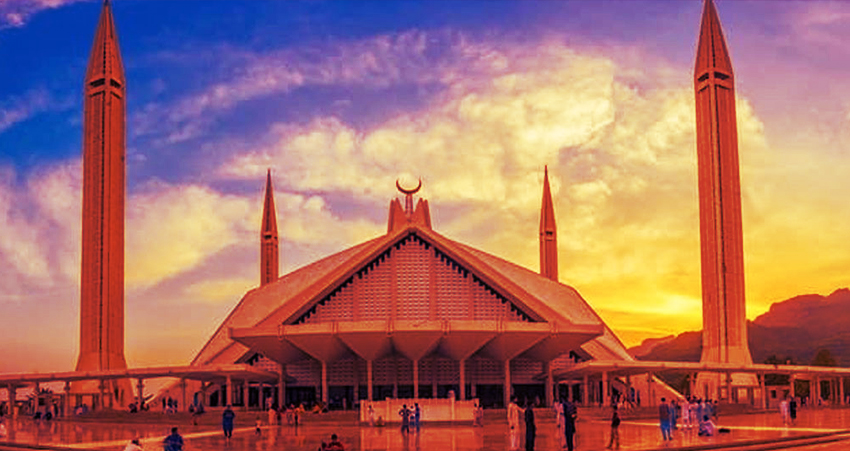
- History: Faisal Mosque in Islamabad, Pakistan, was a gift from King Faisal of Saudi Arabia to the Pakistani people.
- Capacity: With a capacity of over 100,000 worshippers, it is one of the largest mosques in South Asia.
- Unique Architectural Features: The modern and striking design, inspired by Bedouin tents and the Grand Mosque in Mecca, sets Faisal Mosque apart.
- Location: Islamabad, Pakistan.
- Cultural Significance: Faisal Mosque is an architectural marvel and a prominent landmark, representing the strong ties between Pakistan and Saudi Arabia.
5. Imam Reza Shrine
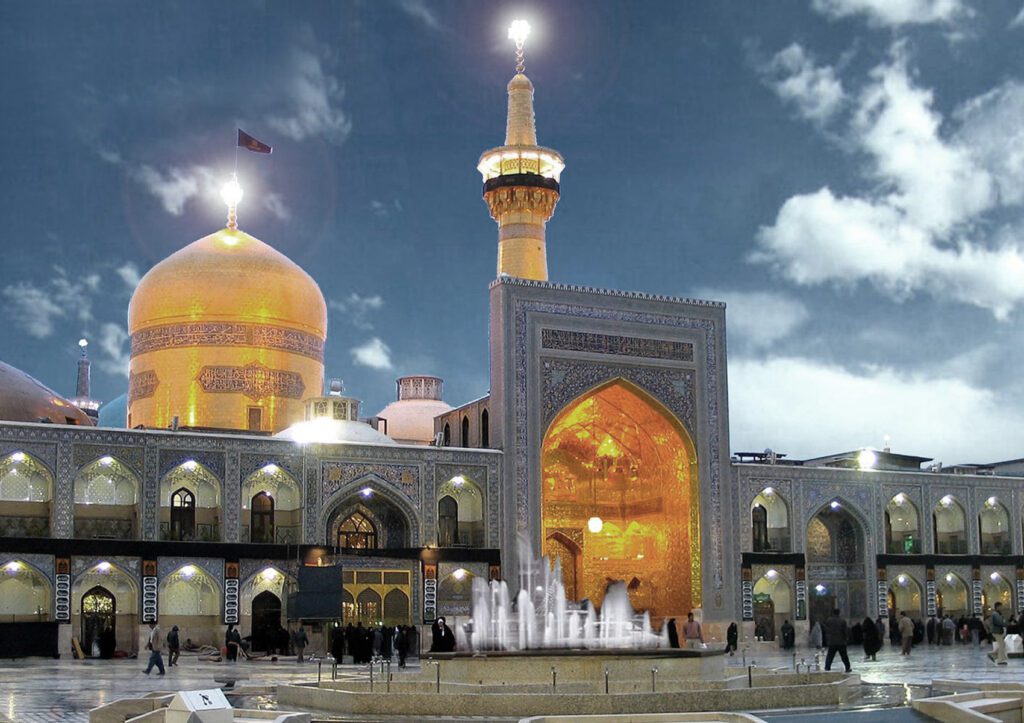
- History: The Imam Reza Shrine located in Mashhad, Iran, is no ordinary mosque. It’s a historical marvel, a symbol of an enduring faith that has lasted through the centuries. The shrine was created in the 9th century, dedicated to Imam Reza, the eighth Shia Imam.
- Capacity: The crowd it can accommodate? Over a million worshippers can find solace within its walls.
- Unique Architectural Features: Step inside and your eyes might be caught by the golden dome, the intricate geometric designs, and the lavish mirror work that sparkles from every corner.
- Location: Mashhad, Iran.
- Cultural Significance: The Imam Reza Shrine isn’t just a place of worship, it’s a beacon of spiritual resilience, a place where the faith of millions comes together. It’s the largest mosque in the world by dimension and the second largest in capacity. Can you imagine the energy that fills the air during the peak prayer times?
6. Hassan II Mosque
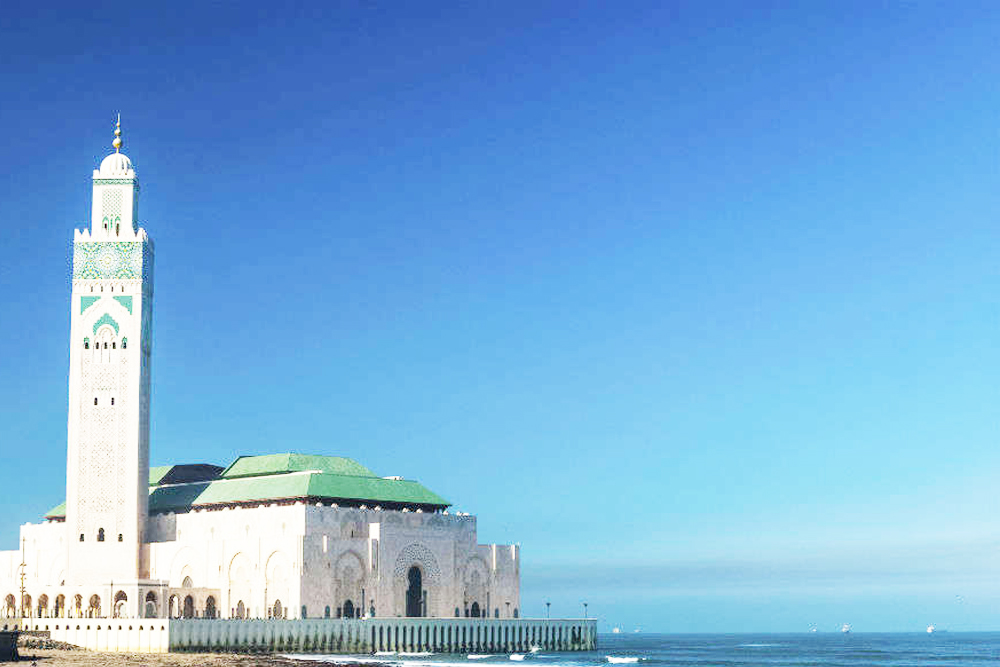
- History: Standing tall and proud on the Atlantic coastline of Casablanca, Morocco, the Hassan II Mosque is a marvel of modern Islamic architecture. Its construction began in 1986 and was completed in 1993 – a colossal project that reflects the late King Hassan II’s vision for Morocco.
- Capacity: With room for up to 105,000 worshippers, it’s not just one of the world’s largest mosques, but also one of the few open to non-Muslims.
- Unique Architectural Features: Gaze at the towering minaret, soaring to 210 meters, the tallest in the world! Marvel at the exquisite details – the hand-carved stone and wood, the intricate mosaics, and the retractable roof that opens to the heavens.
- Location: Casablanca, Morocco.
- Cultural Significance: More than a place of worship, the Hassan II Mosque is a symbol of Morocco’s rich cultural heritage, a blend of traditional Moroccan design and modern architecture. When you take a peek inside, can you feel the immensity of this iconic symbol of Casablanca?
7. Taj-ul-Masajid

- History: Taj-ul-Masajid, translating to ‘Crown Among Mosques’, is a magnificent gem tucked away in the heart of Bhopal, India. This impressive mosque, with its construction spanning over a century, narrates a tale of perseverance and devotion.
- Capacity: Its capacious courtyard and prayer hall can embrace up to 175,000 worshippers, making it one of the largest mosques in Asia.
- Unique Architectural Features: Prepare to be awestruck by its imposing façade, the domes adorned with petal-like designs, tall minarets, and the sprawling courtyard. Doesn’t the sheer scale and intricate craftsmanship leave you spellbound?
- Location: Bhopal, India.
- Cultural Significance: More than just a mosque, Taj-ul-Masajid serves as a significant Islamic cultural center. It is a repository of Islamic knowledge with a madrasa, and an annual three-day Ijtima or religious congregation. Can you feel the reverberation of layered history and rich cultural heritage within its walls? The Taj-ul-Masajid is more than just a mosque, it’s a breathtaking architectural masterpiece. Its towering minarets reaching for the sky, intricate designs and patterns adorning every surface, and spacious prayer halls filled with the sound of worshippers coming together in prayer – these are just some of the unique features that make these mosques truly remarkable.
8. Sheikh Zayed Mosque
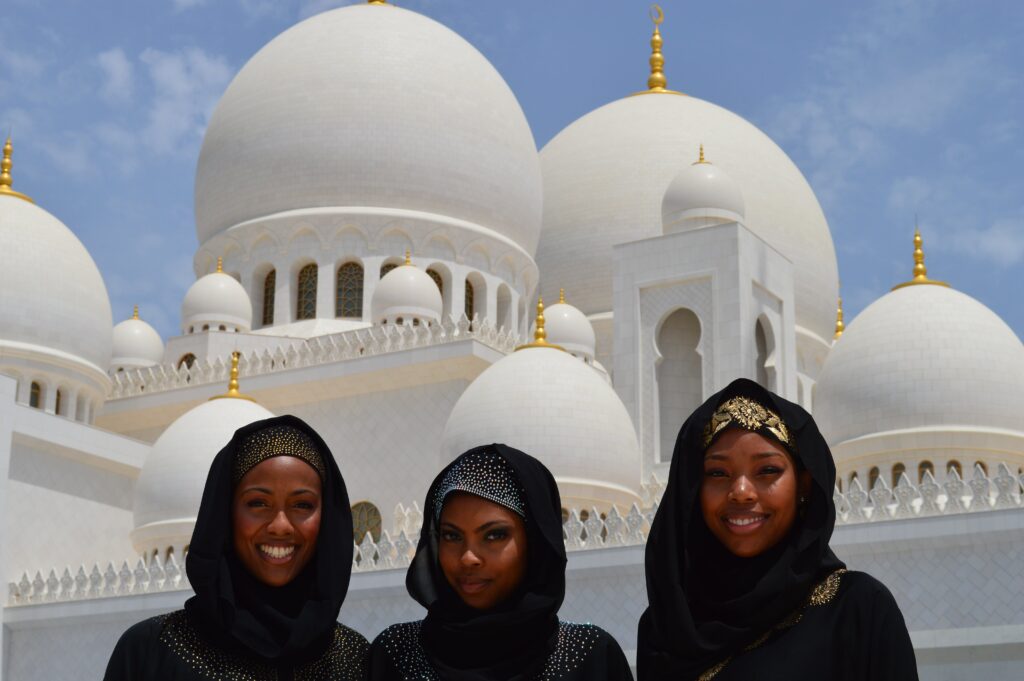
- History: Nestled in the heart of Abu Dhabi, the Sheikh Zayed Mosque is a sublime testament to the vision of the late Sheikh Zayed bin Sultan Al Nahyan, the founder of the United Arab Emirates. This architectural marvel, completed in 2007, stands as a beacon of tolerance and diversity.
- Capacity: With a capacity to welcome over 40,000 worshippers, it’s not only the largest mosque in the UAE but also one of the largest mosques in the world.
- Unique Architectural Features: Take a moment to marvel at the stunning white marble domes, the world’s largest hand-knotted carpet, and the grand chandelier adorned with millions of Swarovski crystals. Can you feel the serenity that envelops you as you step into its vast courtyard?
- Location: Abu Dhabi, United Arab Emirates.
- Cultural Significance: The Sheikh Zayed Mosque isn’t just a place of worship, it’s a symbol of unity, showcasing the cultural diversity of the Islamic world. It’s an iconic symbol of the UAE’s commitment to harmonious coexistence. Can you sense the tranquillity that resonates within these walls? The Sheikh Zayed Mosque is much more than a mosque – it’s a symbol of a nation’s vision, an architectural masterpiece, and a testament to the power of unity and diversity.
9. Al-Saleh Mosque
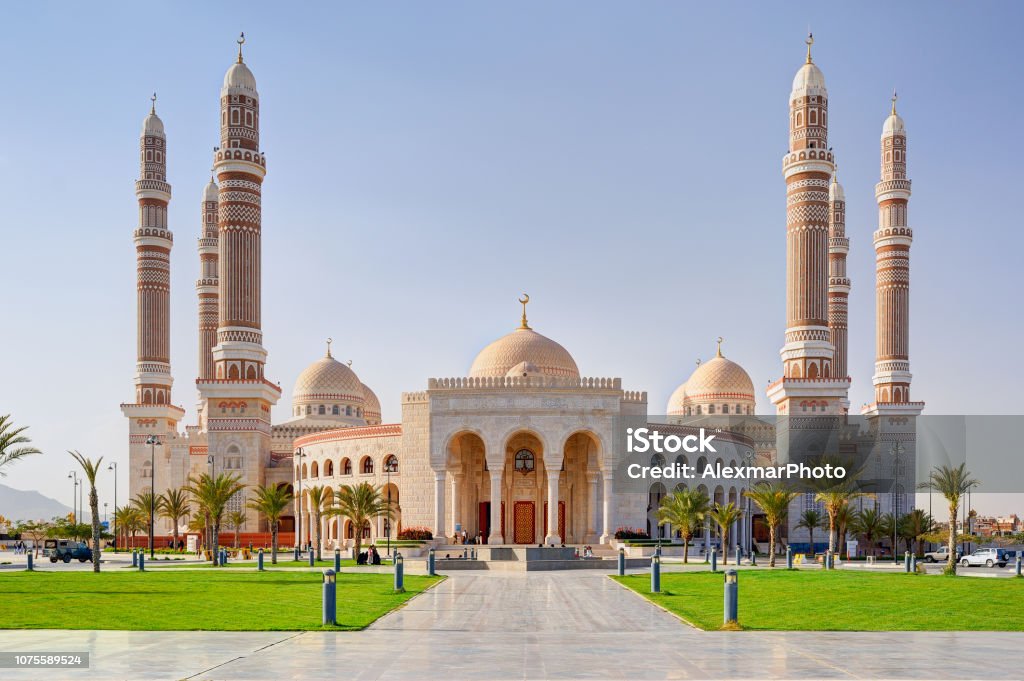
- History: Located in the heart of Sana’a, Yemen, the Al-Saleh Mosque isn’t just any mosque, it’s a symbol of Yemeni pride. Finished in 2008, this breathtaking mosque was the vision of the late Yemeni President Ali Abdullah Saleh, standing as a testament to the rich history and cultural heritage of Yemen.
- Capacity: With room to accommodate over 44,000 worshippers, it’s one of the largest mosques in the world.
- Unique Architectural Features: As you step inside, your eyes will be drawn to the enchanting combination of modern and traditional Yemeni architectural styles. The exterior is adorned with five large domes, the central one being the largest, symbolizing the unity of the five pillars of Islam. And the beautifully embellished minarets? They tower above the cityscape, standing as beacons of faith. Don’t the vibrant colors and intricate geometrical patterns leave you in awe?
- Location: Sana’a, Yemen.
- Cultural Significance: More than a place of worship, the Al-Saleh Mosque represents the spirit of Yemen, its resilient people, and their enduring faith. It serves as a significant social and cultural center, hosting various religious, educational, and social events throughout the year. Can you feel the echo of thousands of voices singing in unison, the peaceful silence of individual prayers, the sense of community that the Al-Saleh Mosque fosters? It’s not just a mosque, it’s the beating heart of Sana’a.
10. Badshahi Mosque
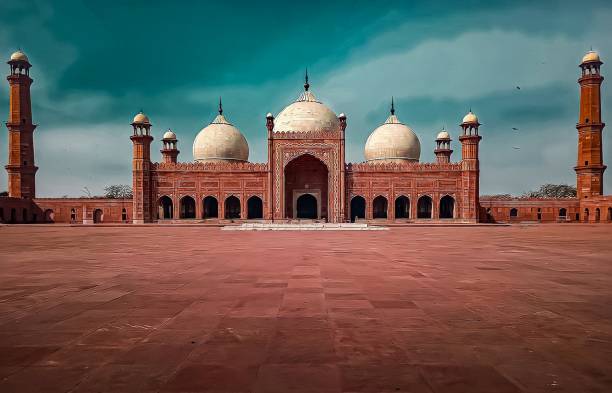
- History: The Badshahi Mosque, or ‘Emperor’s Mosque’, is a reflection of the grandeur of the Mughal era. Nestled in the heart of Lahore, Pakistan, this architectural marvel was built under the reign of Emperor Aurangzeb in 1673. It stands as a testament to the rich history and cultural heritage of the Mughal Empire.
- Capacity: With the capacity to host up to 100,000 worshippers, it’s one of the largest mosques in the world.
- Unique Architectural Features: Prepare to be awestruck by the red sandstone exterior, the white marble domes, and the intricate inlay work of the Badshahi Mosque. Notice the towering minarets, reaching a height of 196 feet – aren’t they simply magnificent? Can you see the fine blend of Persian and Islamic architectural styles?
- Location: Lahore, Pakistan.
- Cultural Significance: More than just a place of worship, the Badshahi Mosque serves as a significant cultural and historical landmark of Pakistan. It has witnessed countless historical events and continues to be a focal point during religious festivals. Can you sense the echoes of the past and the rich cultural tapestry that this grand edifice embodies? Remember, the Badshahi Mosque is not just a mosque, it’s a narrative of an era marked by grandeur and architectural brilliance.
Conclusion
These grand mosques represent the beauty of Islamic architecture, the diverse cultures they are a part of, and the devotion of millions of worshippers. As you explore the world’s largest mosques, take a moment to appreciate the rich history, stunning architectural features, and the cultural significance they hold. Each mosque is a testament to human creativity, faith, and the power of unity.
Resources
To delve deeper into the fascinating world of these magnificent mosques, check out the following resources:
- Books:
- “Islamic Art and Architecture: From Isfahan to the Taj Mahal” by Henri Stierlin. This book provides a comprehensive overview of Islamic architecture and art, including some of the mosques mentioned in this article.
- “The Mosque: History, Architectural Development & Regional Diversity” by Martin Frishman and Hasan-Uddin Khan. This book explores the historical and architectural aspects of mosques across the world.
- Online Sources:
- ArchNet – This is a comprehensive online resource on Islamic architecture, offering a vast database of images, texts, and architectural drawings.
- Documentaries:
- “Sacred Spaces” – This documentary series explores the spiritual and architectural significance of mosques around the world, including some featured in this article. It’s available on several streaming platforms.
- Museum Exhibitions:
- The Museum of Islamic Art in Doha, Qatar – This museum hosts an impressive collection of Islamic art, including architectural models and design elements from various mosques.
- Virtual Tours:
- Many of these mosques offer virtual tours on their official websites, providing a unique opportunity to explore their stunning architectural features and learn more about their rich histories.
Also Read: Why is it called masjid al haram- 6 Unique rules and customs
FAQ – Frequently Asked Questions
What distinguishes Islamic architecture?
Islamic architecture is characterized by its blend of practicality, spirituality, and artistry. It often includes features such as domes, minarets, and arches, and is richly decorated with geometric patterns and calligraphy.
Why do mosques have domes?
Domes in mosques serve both aesthetic and functional purposes. They enhance the mosque’s visual appeal and also improve the acoustics, allowing the imam’s voice to be heard clearly throughout the prayer hall.

